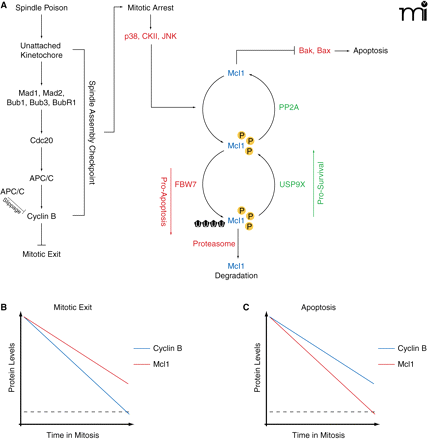Spindle Poisons and Cell Fate: A Tale of Two Pathways

A. SAC activation leads to mitotic arrest and triggers the onset of Mcl1 degradation. Mcl1 is acted on by a set of pro-apoptotic proteins that drive its degradation and a set of pro-survival proteins that enhance its stability. During prolonged mitotic arrest, the pro-apoptotic pathway is favored. Simultaneously, incomplete inhibition of the APC/C results in slow cyclin B degradation, a phenomenon known as slippage. B. Cells treated with spindle poisons can exit mitosis if cyclin B concentrations fall below the threshold (dotted line) before the concentration of Mcl1 does. C. If Mcl1 levels fall below threshold (dotted line) before cyclin B, the apoptotic pathway is triggered while the cell is in mitosis.



